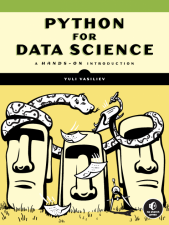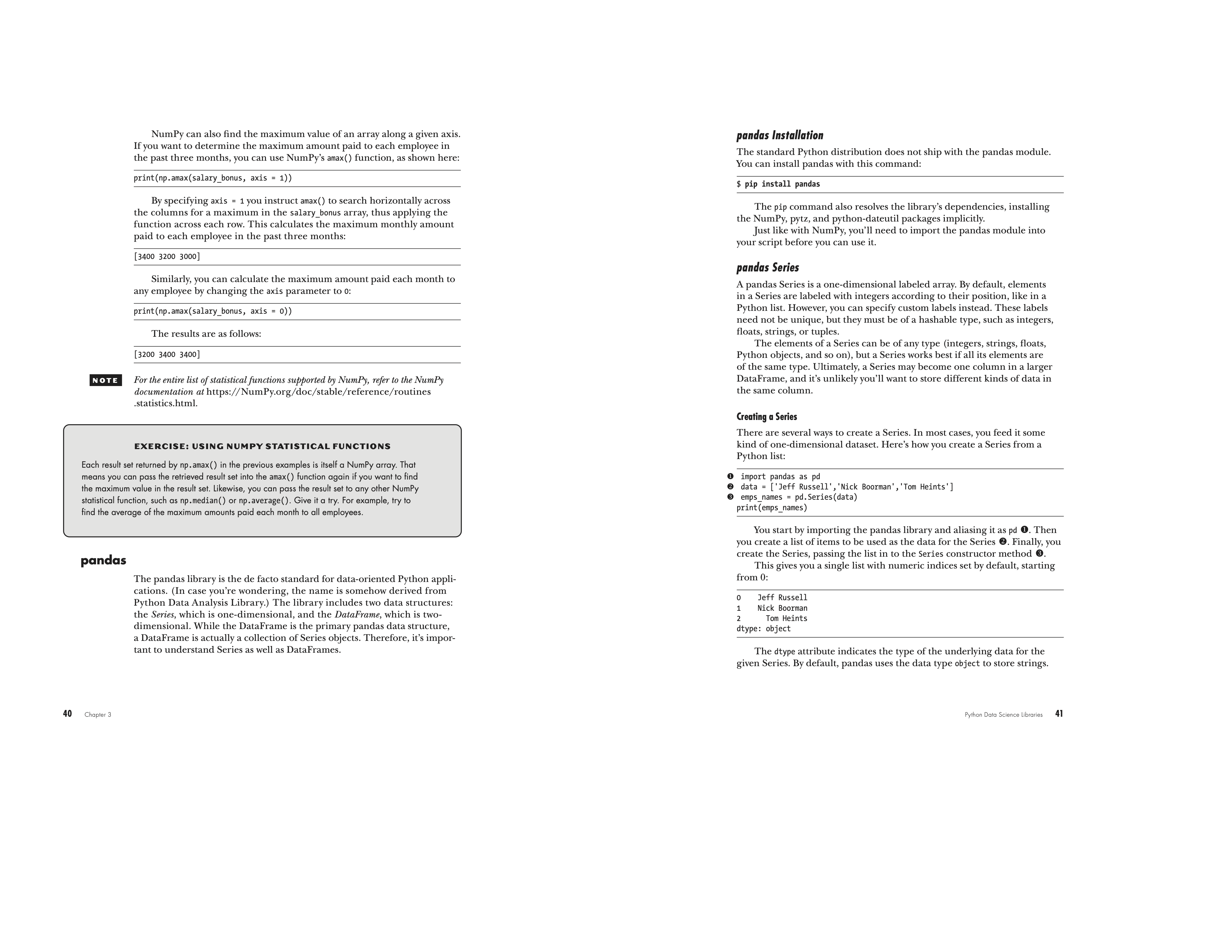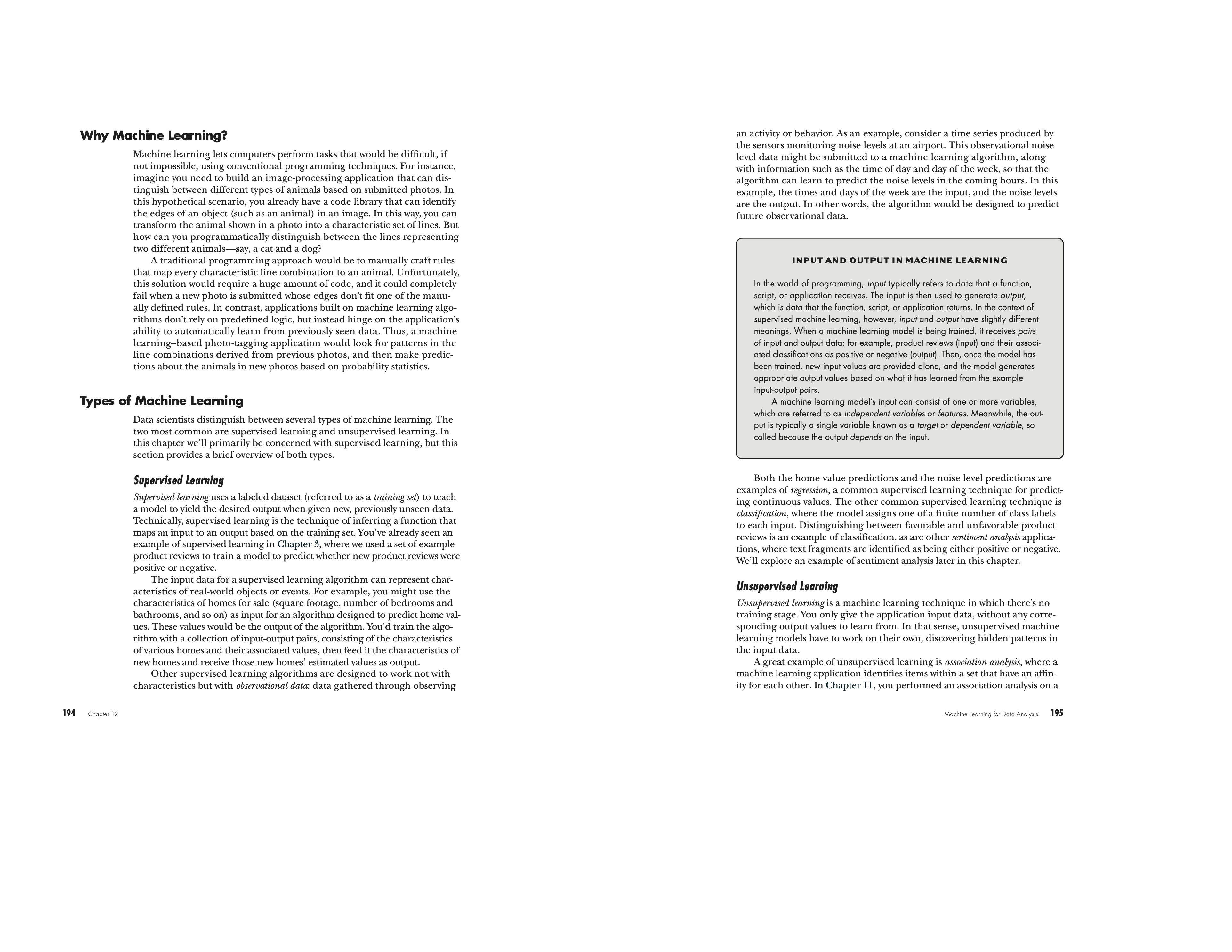Introduction
Chapter 1: The Basics of Data
Chapter 2: Python Data Structures
Chapter 3: Python Data Science Libraries
Chapter 4: Accessing Data from Files and APIs
Chapter 5: Working with Databases
Chapter 6: Aggregating Data
Chapter 7: Combining Datasets
Chapter 8: Creating Visualizations
Chapter 9: Analyzing Location Data
Chapter 10: Analyzing Time Series Data
Chapter 11: Gaining Insights from Data
Chapter 12: Machine Learning for Data Analysis
Index
View the Copyright page
View the detailed Table of Contents View the Index
Python for Data Science
Look Inside!
Download Chapter 9: ANALYZING LOCATION DATA
Python is an ideal choice for accessing, manipulating, and gaining insights from data of all kinds. Python for Data Science introduces you to the Pythonic world of data analysis with a learn-by-doing approach rooted in practical examples and hands-on activities. You’ll learn how to write Python code to obtain, transform, and analyze data, practicing state-of-the-art data processing techniques for use cases in business management, marketing, and decision support.
You will discover Python’s rich set of built-in data structures for basic operations, as well as its robust ecosystem of open-source libraries for data science, including NumPy, pandas, scikit-learn, matplotlib, and more. Examples show how to load data in various formats, how to streamline, group, and aggregate data sets, and how to create charts, maps, and other visualizations. Later chapters go in-depth with demonstrations of real-world data applications, including using location data to power a taxi service, market basket analysis to identify items commonly purchased together, and machine learning to predict stock prices.
"A great introduction to Python for data science in a compact package. I'm impressed with what Yuli Vasiliev included: the basics of Python, multiple angles at preparation, and a number of chapters on common types of data. The book is surprisingly visual for a field known for rows and columns—the location data was especially interesting to me. By the end of Python for Data Science, I was ready to apply the principles to my own datasets."
—Adam DuVander, Founder of EveryDeveloper
You can find resources for the book on GitHub.





